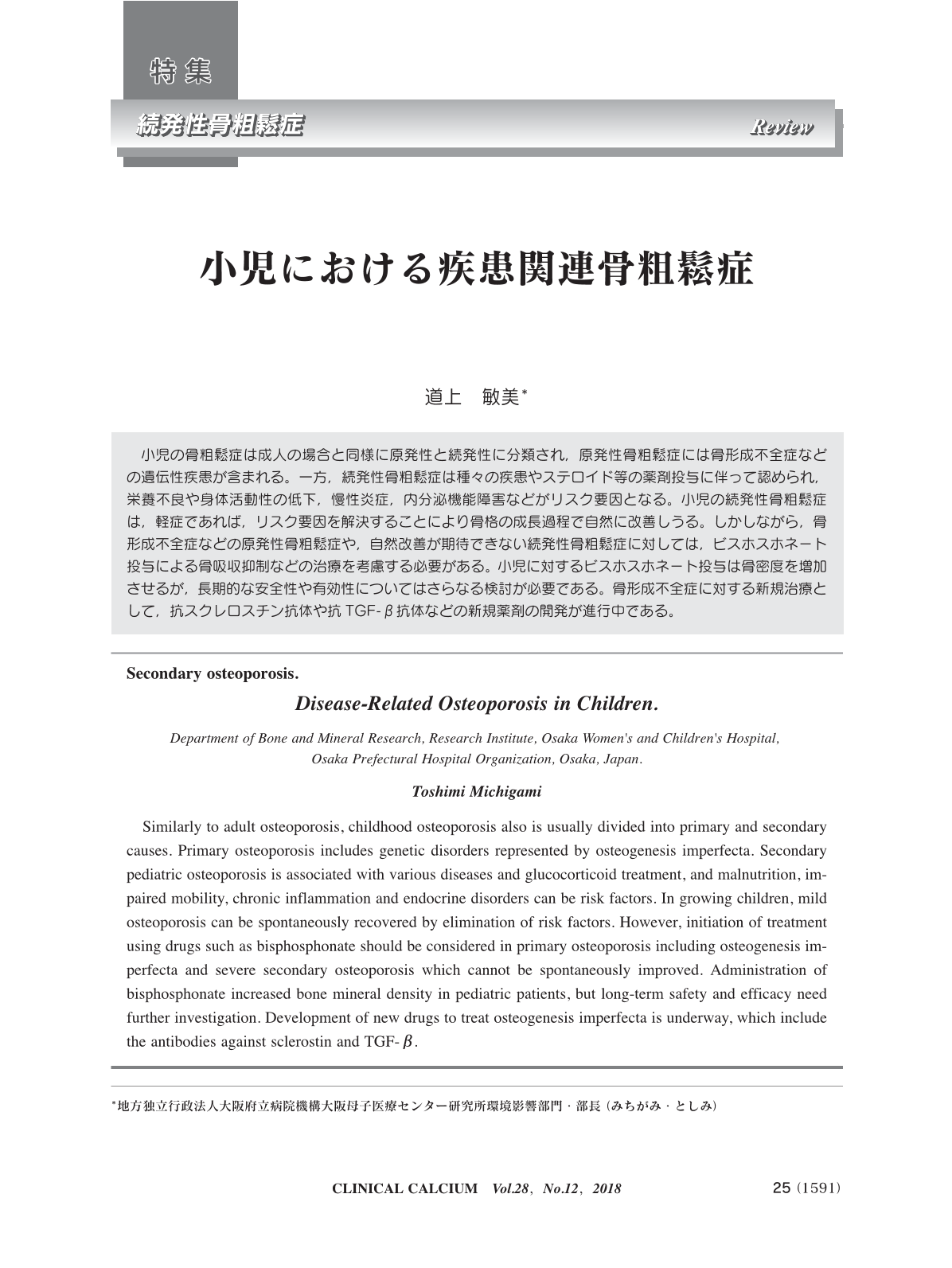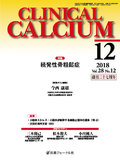Japanese
English
- 有料閲覧
- Abstract 文献概要
- 1ページ目 Look Inside
- 参考文献 Reference
小児の骨粗鬆症は成人の場合と同様に原発性と続発性に分類され,原発性骨粗鬆症には骨形成不全症などの遺伝性疾患が含まれる。一方,続発性骨粗鬆症は種々の疾患やステロイド等の薬剤投与に伴って認められ,栄養不良や身体活動性の低下,慢性炎症,内分泌機能障害などがリスク要因となる。小児の続発性骨粗鬆症は,軽症であれば,リスク要因を解決することにより骨格の成長過程で自然に改善しうる。しかしながら,骨形成不全症などの原発性骨粗鬆症や,自然改善が期待できない続発性骨粗鬆症に対しては,ビスホスホネート投与による骨吸収抑制などの治療を考慮する必要がある。小児に対するビスホスホネート投与は骨密度を増加させるが,長期的な安全性や有効性についてはさらなる検討が必要である。骨形成不全症に対する新規治療として,抗スクレロスチン抗体や抗TGF-β抗体などの新規薬剤の開発が進行中である。
Similarly to adult osteoporosis, childhood osteoporosis also is usually divided into primary and secondary causes. Primary osteoporosis includes genetic disorders represented by osteogenesis imperfecta. Secondary pediatric osteoporosis is associated with various diseases and glucocorticoid treatment, and malnutrition, impaired mobility, chronic inflammation and endocrine disorders can be risk factors. In growing children, mild osteoporosis can be spontaneously recovered by elimination of risk factors. However, initiation of treatment using drugs such as bisphosphonate should be considered in primary osteoporosis including osteogenesis imperfecta and severe secondary osteoporosis which cannot be spontaneously improved. Administration of bisphosphonate increased bone mineral density in pediatric patients, but long-term safety and efficacy need further investigation. Development of new drugs to treat osteogenesis imperfecta is underway, which include the antibodies against sclerostin and TGF-β.



